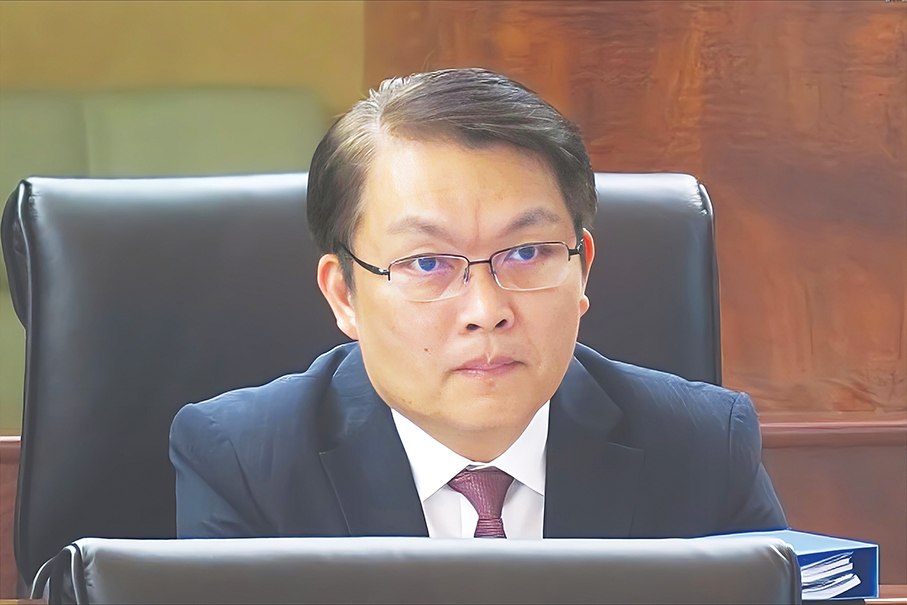The Rua da Felicidade pedestrianised area started at 11 a.m. on Mid-Autumn Festival last Friday and will end at 1 a.m. on Sunday, featuring, in the pilot phase, large-scale art installations, a cultural and creative market, an art and cultural event, interactive check-in game and a night market.
The Rua da Felicidade area, which is aimed to “create a vibrant and artistic atmosphere filled with cultural and tourism experiences, while promoting the business and development of local small- and medium-sized enterprises (SMEs) in the district”, is pedestrianised daily from 11 a.m. through 1 a.m., during which vehicular traffic is prohibited there.
Rua da Felicidade (“福隆新街”), also known as the “Street of Bliss”, was famous for the commercial activities of prostitution and opium dens until they were banned in the 1940s, according to Wikipedia.
The 11-day pedestrianisation of the Rua da Felicidade area, jointly carried out by the government’s cross-departmental teams and Wynn Resorts, covering the surroundings of Travessa do Mastro, Travessa do Aterro Novo, Rua do Matapau and Travessa de Hó Lo Quai, with the “Street of Bliss” being the core.
In celebrating this year’s Mid-Autumn Festival last Friday, in addition to shows by nearly 20 mainland and Macau performers in the “Back to Rua da Felicidade” theatre and “East Meets West” art flash mob, embellished lanterns and moon rabbit installations were set up in the area, which, according to a statement by Wynn last Friday, “create a prosperous and festive atmosphere for visitors and tourists”.
According to Wynn, during pedestrian hours, the daytime creative market operates from 1 p.m. to 5 p.m., with the art flash mob and roadside bar running, respectively, from 5 p.m. to 8 p.m. and from 1 p.m. to 11 p.m.
An opening ceremony was held last Friday afternoon, marking the start of the first integrated resort operative-government revitalisation project which started from the Mid-Autumn Festival and will end on Sunday.
This year’s National Day was commemorated on Sunday.
Marisa Gaspar, who was in the area to do fieldwork research regarding the connection between cultural heritage and tourism in Rua da Felicidade, told The Macau Post Daily and the public broadcaster TDM last Friday that “I think it’s a good idea to have this pedestrian street, [which is] good for business as people can walk around to see the shops and so on,” adding that it was a good idea for people to have more life outside.
In view of the fact that the colour of the buildings’ walls in the street has been changed from the original red to green, Gaspar said she preferred the red in fact, adding that the changes to the colour of the walls, in her opinion, failed to tell the tourists about the area’s history.
When asked about any potential areas which she thought the government could close off to become a pedestrianised area, Gaspar said: “I think it could be a good idea as well for all the narrow streets”.
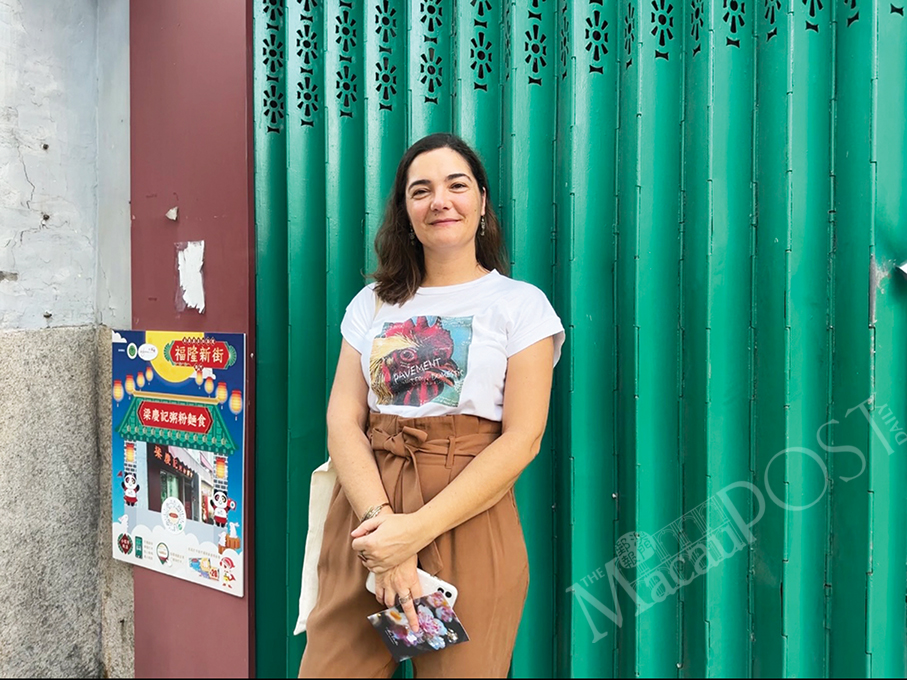
Pedestrianised area researcher Marisa Gaspar poses yesterday after speaking to reporters.
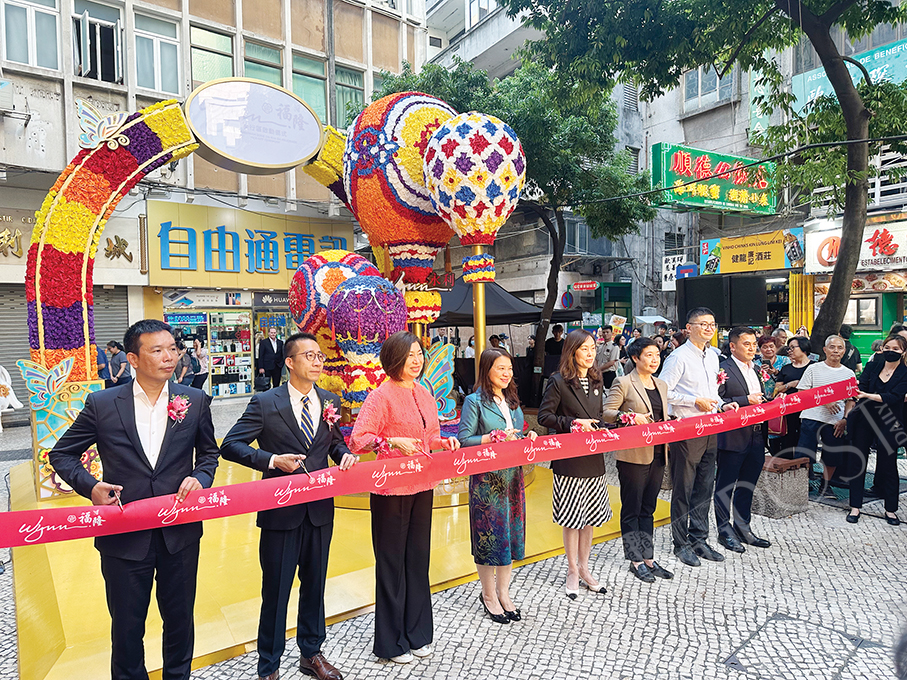
The pedestrian area kicks off last Friday, with the participation of Secretary for Social Affairs and Culture Elsie Ao Ieong U (fourth from right), Cultural Affairs Bureau (IC) President Leong Wai Man (third from right) and Wynn Macau President and Board Vice-Chairman Linda Chen Chih-Ling (third from left), among other representatives.
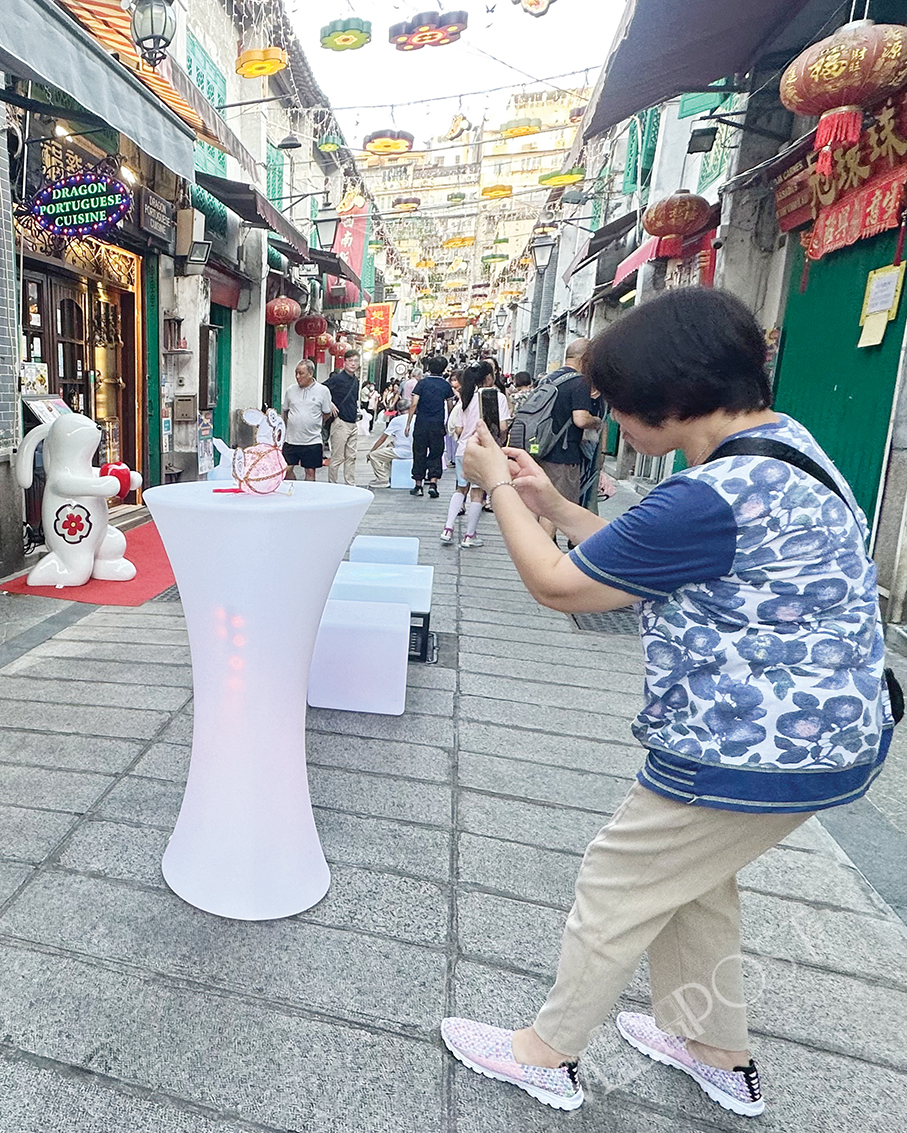
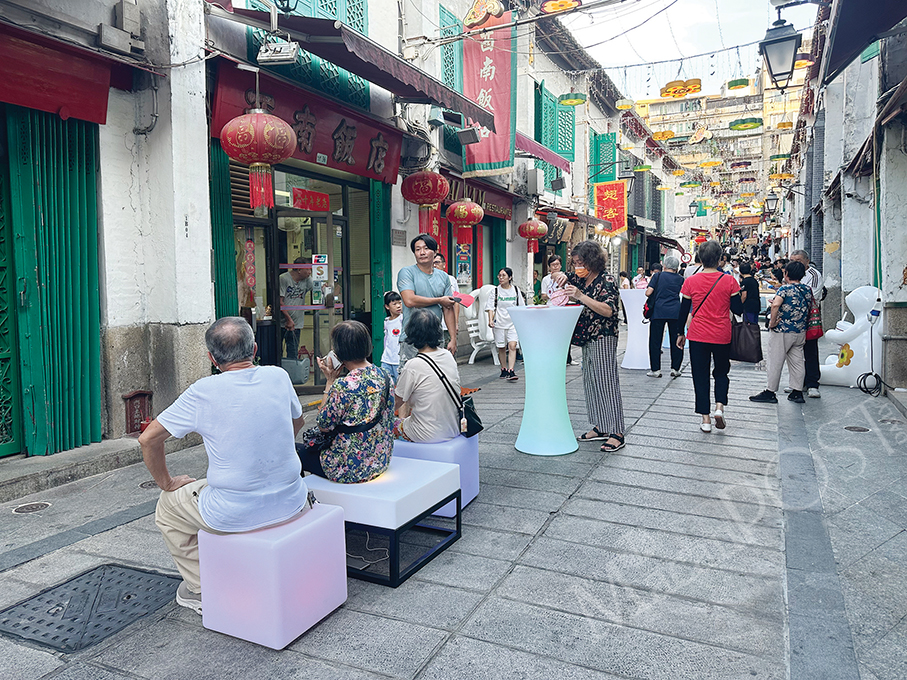
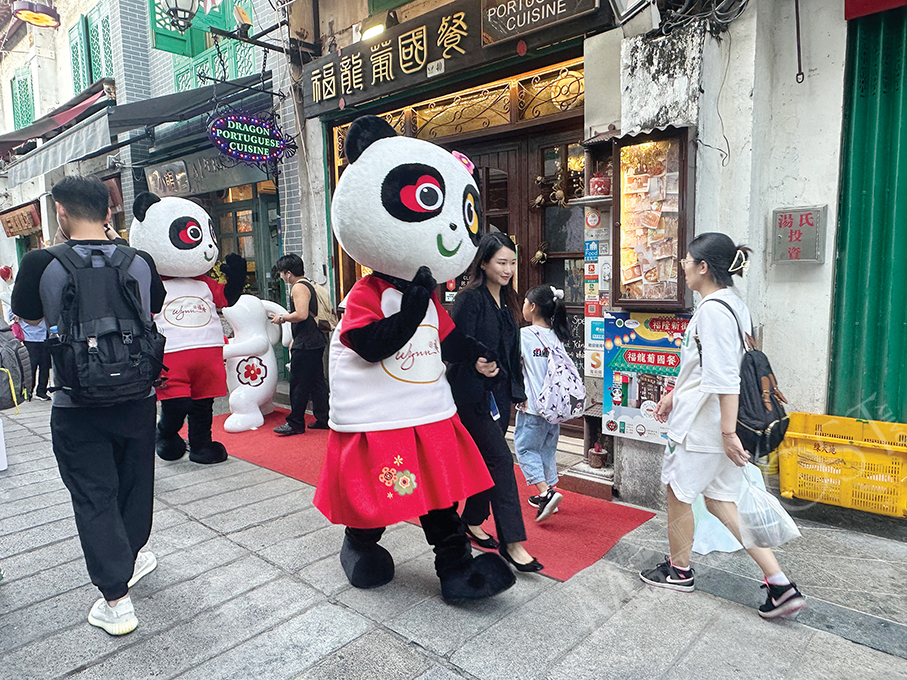
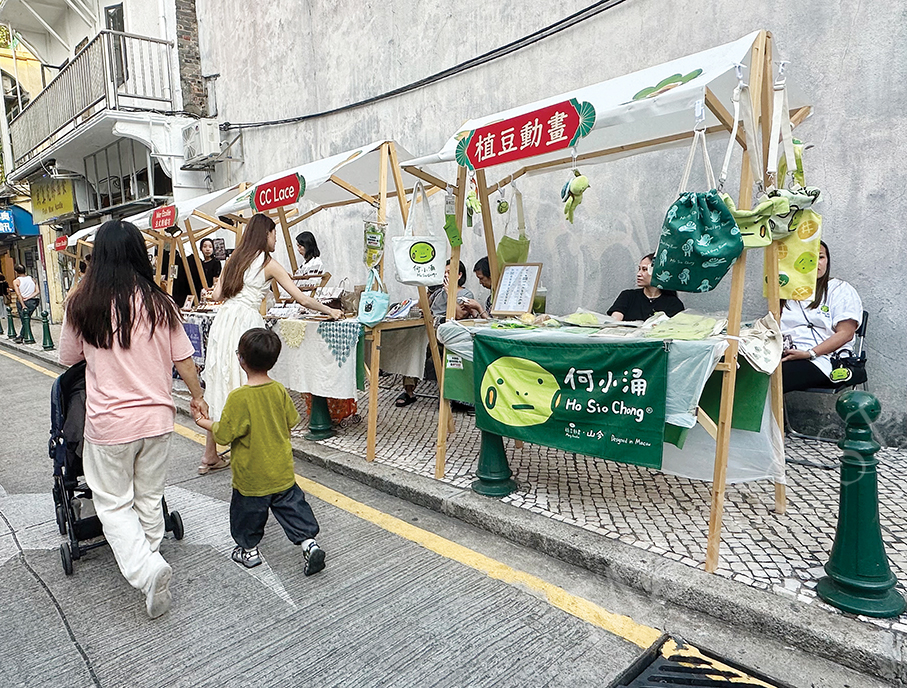
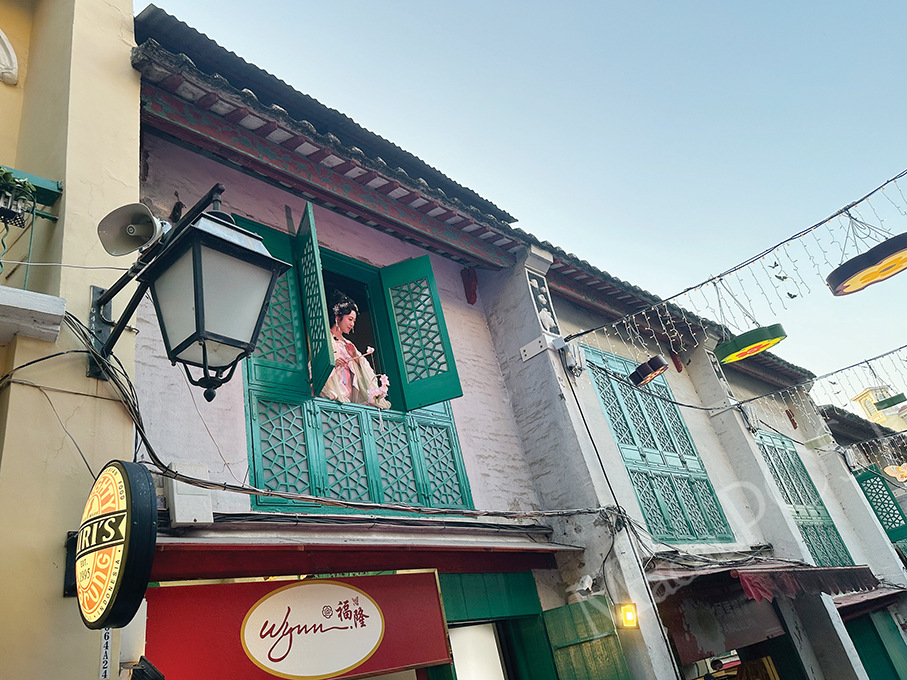
Visitors and locals explore the pedestrianisation of the Rua da Felicidade area, which started last Friday and will end on Sunday. – Photos: Yuki Lei





